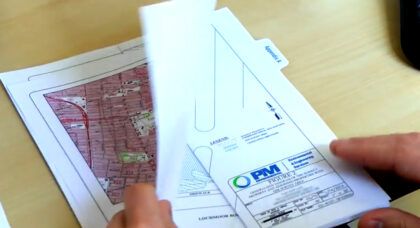A Day in the Life of Elizabeth Masserang
 PM Environmental’s Regional Manager of Economic Incentive sits down with us to provide a glimpse into her daily routine, as well as share how she got to where she is now.
PM Environmental’s Regional Manager of Economic Incentive sits down with us to provide a glimpse into her daily routine, as well as share how she got to where she is now.
Q: Name, title, location:
Elizabeth Masserang – Regional Manager, Economic Incentives
Berkley, MI
Q: Tell us a little about your role and what you do.
I oversee and manage Brownfield projects in the Southeast Michigan region. I spend a lot of time speaking to existing and prospective clients on redevelopment projects that they are trying to bring to fruition and discuss Brownfield incentives that can help finance and push their projects forward. For the projects that are good candidates, I work with our Economic Incentives team on the application and approval process. In the instances that EGLE approval is needed to facilitate funding, I also work very closely with the Site Investigations project managers to accomplish this.
Q: How did you end up down this career path?
Honestly, I kind of stumbled into it. I graduated college with a dual degree in Urban and Regional Planning and Environmental Policy. I knew I liked my coursework, but I didn’t necessarily know how to apply it to a career.
I started out at PM shortly after graduation first as a Staff Researcher and then as a Phase I ESA Project Manager. I am very grateful for the mentorship I received at PM. While I enjoyed the historical research aspect of Phase I ESAs, I wanted to take a deeper dive into how our role as environmental consultants played into the larger picture of real estate and the built environment.
I was encouraged to shadow and work with other departments in efforts to find and develop my own career path. I started shadowing and assisting Jessica DeBone, one of PM’s National Managers, 9 years ago and took an instant liking to Brownfield incentives. I’ve been in our Economic Incentives department in various roles ever since.
Q: What does a normal day for you look like?
A typical day for me really varies depending on where opportunities and projects are in the pipeline. I would say a typical week for me, though, usually consists of dedicated time to discussing new, potential projects with clients, drafting incentives applications, attending meeting with local units of government to discuss or seek approval for projects, managing project schedules and monitoring milestones.
I also like staying up to date on current real estate trends and other brownfield projects so when I have time, I enjoy attending and participating in local networking events.
Q: What’s the best career advice you have ever heard?
1. Be prepared for your day to not go according to plan
2. Learn how to be okay with that and embrace it
By default, I’m a planner. But learning how to roll with the punches, the inevitable project fires, and unexpected project pivots is something I’ve grown to appreciate. It keeps my work engaging and challenging. And it also allows me to problem solve, which I also enjoy.
Q: What’s the most unusual project you have ever worked on?
I once worked on a project that straddled 2 different municipalities. It added some layers to how we applied for incentives programs, required an additional level of coordination with the county but ultimately led to a very collaborated effort to get the project started. It’s now a mixed-use commercial campus, housed on a former industrial site.
Q: How would you explain what you do to someone who isn’t in the industry?
I typically point to a lot of the rehabilitation and redevelopment work occurring in the neighborhood on historic, blighted, or contaminated properties. These Brownfield properties are often more costly to redevelop due to existing conditions, whether that be subsurface contamination from former gas stations or manufacturing use or obsolete building systems that require demolition and replacement. These conditions are what deter development interest and financial viability to undertake redevelopment. Depending on the level of remediation or rehabilitation needed, the financing can become very complex to assemble. This is where our team steps in and can help – we can explore Brownfield incentive programs a project may be eligible for. If we determine the project to be a good candidate, we can help apply for and secure these incentives. And if there is contamination remediation or mitigation needed, we have a team that can help with that too.
Q: How would your 10-year-old self react to what you do now?
This is an interesting question since my 10-year-old self had no idea this profession existed. I would be kind of surprised given I spent most of my childhood thinking I wanted to be a doctor. But I’d like to think I’d be proud.
One of the best parts of my job is seeing the projects reach the finish line and seeing these projects contribute to the revitalization of a neighborhood. In some cases, it can take years. But those success stories are incredibly impactful and can have a ripple effect of benefits to nearby businesses and residents. Getting to play even a small role in that is very fulfilling.
Publication Details
Date
June 23, 2022



